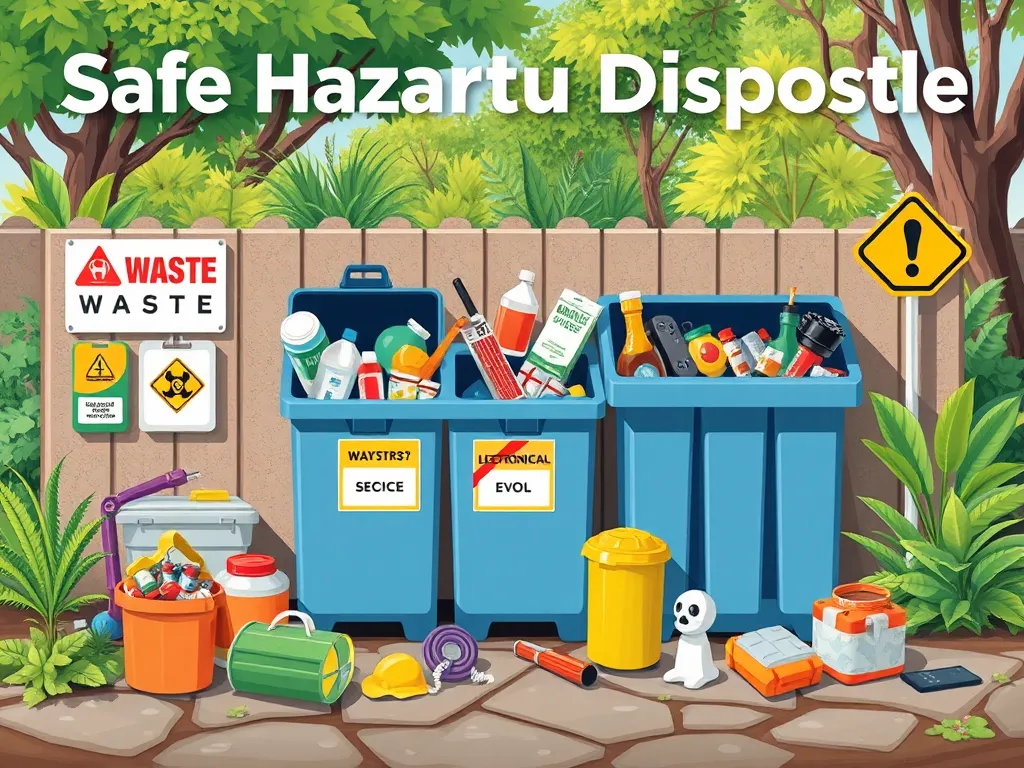Expert Guide to Safe Hazardous Waste Disposal Practices

Safe Hazardous Waste Disposal: A Comprehensive Guide
Safe hazardous waste disposal is crucial for protecting public health, the environment, and maintaining regulatory compliance. Hazardous waste includes substances that are toxic, ignitable, corrosive, or reactive, posing significant risks when improperly handled. Safe hazardous waste disposal methods aim to minimize these risks and ensure that such materials are processed responsibly.
Managing hazardous waste requires adherence to specific guidelines that ensure safe hazardous waste disposal. These guidelines typically involve the segregation of hazardous waste from non-hazardous waste, proper labeling and storage, and the use of certified disposal methods. Following these protocols is vital for companies to avoid legal consequences and contribute to environmental sustainability.
Incorporating safe hazardous waste disposal practices into daily operations not only mitigates risks but can also enhance the reputation of businesses. Companies that prioritize environmental responsibility are viewed more favorably by consumers and investors. Furthermore, a strong focus on waste management can lead to operational efficiencies that reduce costs in the long run.
The ongoing challenge of safe hazardous waste disposal requires collaboration among businesses, government agencies, and the community. Public education campaigns and training programs equip individuals with knowledge about the importance of proper waste handling and disposal, ultimately fostering a culture of environmental stewardship.
For proper disposal of hazardous household products, residents can rely on resources provided by Oregon Metro.
In summary, safe hazardous waste disposal is a shared responsibility that necessitates awareness, adherence to regulations, and commitment to sustainable practices. Organizations and individuals play a critical role in ensuring hazardous materials are disposed of safely, thus protecting human health and the environment.
Regulations for Hazardous Waste Disposal
Understanding EPA regulations on hazardous waste is essential for safe hazardous waste disposal. The Environmental Protection Agency (EPA) classifies hazardous waste into four categories: listed wastes, characteristic wastes, mixed wastes, and universal wastes. Each category has specific handling, treatment, and disposal regulations that must be followed to ensure compliance and safety.
State-specific hazardous waste disposal laws may also vary from federal regulations, emphasizing the need for businesses to familiarize themselves with local requirements. Many states have adopted their own hazardous waste programs that may impose stricter regulations than those mandated by the EPA, further enhancing protection for public health and the environment.
The importance of compliance in waste management cannot be overstated. Non-compliance not only leads to legal ramifications but can also result in significant financial penalties and reputational damage. Businesses that prioritize compliance demonstrate a commitment to safe hazardous waste disposal and contribute to a safer community.
Methods of Safe Disposal
The methods of safe disposal of hazardous waste encompass various techniques, including incineration and landfilling. Incineration involves the burning of hazardous materials at high temperatures, effectively reducing their volume and toxicity. On the other hand, landfilling hazardous waste requires specially designed landfills that prevent contamination of groundwater and soil.
Chemical treatment processes for hazardous materials involve using chemical reactions to neutralize pollutants, making them safe for disposal. Techniques like oxidation, reduction, and polymerization can significantly reduce the hazardous nature of waste, enabling safer disposal methods post-treatment.
Recycling options for hazardous waste are increasingly being explored as a sustainable approach to waste management. Products such as batteries, electronics, and solvents can often be recycled or recovered, minimizing the volume of hazardous waste sent for disposal and conserving resources in the process.
Hazardous Waste Management Plans
Creating an effective hazardous waste management plan is vital for fostering a culture of safe hazardous waste disposal within an organization. Such a plan should outline procedures for waste identification, handling, transportation, and eventual disposal, tailored to the specific needs of the organization while ensuring compliance with relevant regulations.
Identifying hazardous waste in your facility is the first step in any hazardous waste management plan. This involves conducting thorough assessments to categorize waste types, ensuring proper management and segregation from non-hazardous waste and minimizing the risk of exposure.
Training employees on waste disposal procedures is crucial for the successful implementation of a hazardous waste management plan. Regular training sessions can equip staff with the necessary knowledge and skills to handle hazardous materials safely, reducing the likelihood of accidents and ensuring compliance with regulations.
Environmental Impact of Improper Disposal
The effects of hazardous waste on soil and water can have devastating long-term consequences on ecosystems and public health. Contaminated soil can lead to diminished agricultural productivity, while polluted water sources pose significant risks to aquatic life and drinking water quality, necessitating urgent measures for safe hazardous waste disposal.
Health risks associated with improper disposal of hazardous waste are extensive. Exposure to toxins can result in various health issues, including respiratory problems, neurological disorders, and increased cancer risks for communities living near hazardous waste sites. Proper disposal methods are crucial to protecting public health and preventing these adverse effects.
Case studies of hazardous waste contamination highlight the urgency of safe hazardous waste disposal. Incidents such as the Love Canal disaster and the Berkeley Pit illustrate the disastrous consequences of failing to manage hazardous waste properly, emphasizing the need for stringent regulations and responsible waste management practices.
Resources for Hazardous Waste Disposal
Finding licensed hazardous waste disposal companies is essential for organizations looking to ensure safe hazardous waste disposal. Various resources, including online databases and government directories, can help connect businesses with certified disposal providers, emphasizing the importance of selecting reliable partners in waste management.
Government resources for hazardous waste management include guidelines, funding opportunities, and technical assistance programs offered by both federal and state agencies. These resources can support organizations in developing comprehensive hazardous waste management plans that comply with legal requirements.
Community programs for hazardous waste collection offer individuals safe and convenient avenues for disposing of hazardous waste. Local initiatives often provide annual collection events for items like paints, batteries, and electronic waste, encouraging community involvement and promoting safe hazardous waste disposal practices.